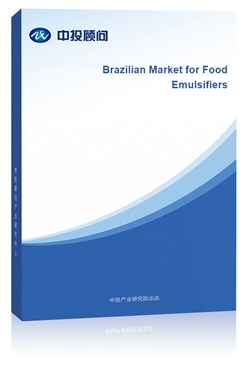
联系电话: 400 008 0586; 0755-82571568
微信扫码: 
Market Introduction and Executive Summary 6 - 18
1. Introduction to the Food Emulsifiers Market in Brazil
2. Research Methodology
3. Scope and Market Segmentation
2. Market Introduction 19 - 25
1. Brief History of Emulsifiers
2. Definition of Emulsifiers: Natural and Synthetic
3. Exchange Rates
3. Brazilian Market for Food Emulsifiers 26 - 35
1. Bakery Products
2. Confectionaries
3. Margarines and Fats
4. Dairy Products
5. Processed Food
4. Market Engineering Measurements 36
5. Brazilian Market Overview and Forecasts 37 – 62
1. Industry Challenges
2. Market Drivers
3. Market Restraints
4. Market Forecasts and Trends
5. Competitive Analyses and Market Share
6. About Frost & Sullivan 63 - 67
Brazilian Market for Food Emulsifiers
This research service aims at analyzing the Brazilian food emulsifiers market. In addition to their functional importance, emulsifiers offer other advantages to food manufacturers, which include:
Ø Extended shelf life for processed food
Ø Improved organoleptic properties (texture, flavor, and mouth feel)
Ø Increased production flexibility and efficiency
Food emulsifiers fall under two broad classes: natural and synthetic. Lecithin, the most widely marketed natural emulsifier, is directly derived from vegetable oils. Synthetic emulsifiers are derived from chemical reactions between fatty acids and glycerol. Monoglycerides and diglycerides, sodium stearoyl lactylate, produced from lactic acid and Stearic Acid Lactylate(SSL), calcium stearoyl lactylate, produced from lactic acid Lactylate and stearic acid Lactylate and polysorbates are some of the most frequently used synthetic emulsifiers.
This research service reviews the food emulsifiers market in Brazil between 2007 and 2014. The market is segmented into two broad product categories, synthetic and natural emulsifiers.